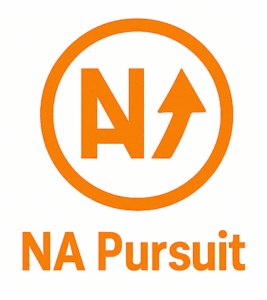Overview
With the onslaught of blockchain technology, the complete face of the finance domain is being transformed and it is completely new for all players. Once a concept at the periphery of discussion, blockchain technology has emerged as an undeniable juggernaut that is not only challenging establishment financial order, but redefining our very conception of money, transactions and the movement of value. We are seeing the blossoming of use cases — from decentralized lending building meaningful credit relationships outside of traditional banks with services like Aave and MakerDAO to the explosive growth of stablecoins such as USDC — being used as a digital dollar in new and creative online and cross-border transactions. At the same time, the intricacies of this revolution are impossible to overlook. The DAO hack of 2016 illustrates the vulnerabilities of smart contracts and the early nature of this technology and its associated risks. Additionally, the regulatory framework is still largely undefined, looming as both an opportunity and a gigantic roadblock to IX adoption at scale.
This post will explore the destructive potential of blockchain in finance, cutting through the hype to examine the actual effects. We’ll look at its strong points, such as improved transparency and efficiency in payments, and its weak points, including scalability issues and determining on the dark net. We’ll look at specific instances of established institutions facing this disruption one way or another, whether by embracing or putting up resistance to these innovations. One understanding the balance between the world of revolution post blockchain vs the challenges that blockchain presents in the real world will need to be thought about for business professionals / leaders and for all those who wish to understand the post of this article. Most importantly, it’s this duality that we must come to grips with if we’re going to figure out a way to build a sustainable, responsible financial future.
Overview: The promise of blockchain technology revolutionizing finance is based on being decentralized, transparent, and secure. While the initial hype was around cryptocurrencies, its applications are gradually extending across the entire range of financial services. The market is at a fairly early stage where experimentation and emerging regulations exist along with uneven rates of adoption.

Analysis of Key Trends:
Positive Trends:
1.Tokenization of Assets: The process of representing tangible assets (aircraft, real estate, art, commodities) as digital tokens on a blockchain is opening access to investment to everyone. This minimizes friction, increases liquidity, and fractionalizes ownership, allowing for new market access for some smaller investors. E.g. Tokenization companies like RealT are making real estate purchase and investment available to the global community in illiquid markets.
- Impact: Lower entry barriers for investors, new income opportunities for issuers, more streamlined asset management.
- We Don’t Know: Build services and platforms servicing tokenized assets; optimize for user experience and security protocols.
2.DeFi Takes Flight: Decentralized finance solutions are putting an entire economy outside of traditional financial intermediaries — with higher yields and lower fees. Smart contracts work on “trustless” principle because once a smart contract is created, it is nigh impossible to tamper with it, making it difficult to deceive users, and the smart contract is minimized to complete a task without putting users at risk. For example, Aave and Compound are popular DeFi lending protocols.
- Disintermediation of traditional financial institutions, potential for greater financial inclusion, new opportunities for algorithmic trading.
- Actionable Insight: Evaluate treasury management opportunities in DeFi, offer your clients DeFi-related products, but stress risk management.
3.Solution lie in Cross-Border Payments: Cryptocurrencies can significantly enhance the speed, cost, and transparency of international payments by bypassing the traditional banking system. For example, Ripple uses blockchain to facilitate cross-border money transfers through its payment network.
- Impact: Cheaper international transactions, faster settlement times, better traceability
- Making Sense: A number of key players have already developed solutions around blockchain technology and those will be more likely as we go forward, so we recommend investment in collaborative commerce (blockchain-based payment solutions) in the coming years and explore partnerships with technology providers in this area while taking care of regulatory compliance as well.
Adverse Trends:
1.Regulatory Uncertainty: There are no unambiguous and consistent global regulations for blockchain and cryptocurrencies yet, which creates a complex and risky operating environment. This hampers adoption and raises compliance costs. For instance, the divergent positions of different governments regarding crypto exchanges and stablecoins result in uneven access to markets.
- Impact: Higher legal and compliance exposure, disincentivized investment, and clouded growth paths.
- Actionable Insight: Collaborate with regulators to inform the policy landscape, implement strong compliance contingencies, and target markets with more established regulatory clarity.
2.Security Vulnerabilities: Hacking incidents and smart contract vulnerabilities still represent a threat for blockchain-based platforms, anti-correlation trust and mass adoption. For example, the high profile exploits of DeFi protocols that resulted in user funds being lost.
- Our Impact: User funds were lost. Reputation damage and backlash from the regulatory side.
- This potential destruction should motivate firms to pour resources into rigorous security audits, complex incident response plans, and education on security risks.
3.Scalability Issues: Blockchain networks face challenges in handling high volumes of transactions, preventing them from replacing traditional systems. For instance, Ethereum gas prices soar whenever the network gets busy, which creates a barrier to entry for some users in DeFi.
- Impact: Frustrated users, high costs, and very little usage.
- Cross-Chain Compatibility & InteroperabilityActionable Insight: Investigate cross-chain protocol possibilities, consider building on interoperable chains, and grow familiarity with multi-coin wallets./vc_column_textScalability/vc_column_textActionable Insight: Research layer-2 scaling solutions, alternative blockchain technologies designed for scalability, and ways to build upon projects with well-structured infrastructure.
Concluding Evaluation:
The space around blockchain in finance is fast-paced and ever-evolving. Although positive trends such as tokenization and DeFi represent incredible growth opportunity, companies also need to recognize and deal with negative trends including regulatory uncertainty, security vulnerabilities and scalability issues. Moving forward, those organizations attuned to these new realities–a culture of innovation, accountability to regulators, rigorous security protocols and an agile technology footprint–will emerge as the victors in these new ecosystems. Continued assessment of the market, prompt upgrades of technology and maintaining compliance with regulatory norms are the keys to success.
Manufacturing and Automotive Supply Chain Finance
Automotive supply chains are complex and have many suppliers and parts. A major manufacturer tracks components using blockchain from point of origin to assembly. This ensures transparency, hence, combating counterfeit parts and streamlining payment times. For example, when a sensor comes from a supplier, its whole story (production date, quality checks, shipment details, etc) will be stored on the chain. This enables the manufacturer to immediately verify authenticity and automatically triggers payments once the part is received, eliminating delays and the necessity for extended manual audits of receipts and invoices. This makes the supply chain more efficient and reliable.
HealthcarePharmaceutical Supply Chain
An international pharmaceutical company combats counterfeit drugs through blockchain tracking medications from manufacturing to distribution. Each batch of medicines is given a unique identity upon creation and is associated with blockchain. As the batch passes through the supply chain, it is scanned at each point, adding transaction data. This provides an immutable record of the drug’s journey, enabling retailers and pharmacies to verify the authenticity of medications. In a scenario where a customer identifies an anomaly by checking its unique ID from a mobile app, the system can provide real-time alerting to the authorities. This improves supply chain security and lowers vulnerabilities for counterfeit drugs making it to market, and instills confidence for pharmacies as well as patients.”
Cross-border payments (Technology & Software)
Blockchain for Cross-Border Salary Payments: A software company with a global team Traditional transfers come at a high cost and are notoriously slow, particularly for contractors in multiple countries. When implemented, secure payment via the firm’s proprietary stablecoin will be processed, and the payment for each transaction will be recorded on a blockchain, thus lowering the cost of transfer to a minimum. For instance, a contractor in India gets paid in a US dollar-pegged stablecoin within minutes rather than having to wait days for a bank transfer and then pay a hefty fee to do a cross-country transaction. This quickens the payment cycle and increases worker satisfaction, making global payroll operations easier.
Trade Finance — (Retail And E-commerce)
In trade finance, an e-commerce platform harnesses blockchain to support small to medium sized overseas suppliers to manage their imports. Instead of lining up a traditional letter of credit, it uses blockchain-based smart contracts that automatically trigger payment when certain shipment milestones are met (e.g., cargo loaded, customs cleared, received to a warehouse). This creates less risk for both the e-commerce platform and suppliers by eliminating counterparty risk and middlemen in the payment process, as well as guaranteeing that both parties complete one side of the deal. No longer dealing with long payment cycles, a small supplier in Asia now gets quick and transparent payment confirmations that help them manage their own cash flow.
Key Strategies Adopted by Blockchain in Finance Companies (2023 Onwards):
Organic Strategies:
- Enhanced Interoperability Focus: Companies are racing to develop solutions that allow disparate blockchain networks to communicate and share data seamlessly This solves a major pain point for financial institutions that use multiple systems. The example now companies building middleware/APIs to connect private permissioned ledgers that banks are using to public chains for use cases like tokenized securities This process is designed to streamline the financial ecosystem and provide enhanced interoperability between traditional finance and the digital asset space.
- Streamlined Regulatory Adherence Systems: There is a strong movement for incorporating compliance directly into the blockchain applications. Such as introducing KYC/AML checks, audit trails, and data privacy tools. Developers, for instance, are working on solutions that allow transaction monitoring and reporting in line with which jurisdictions concern. It shows regulators that they are serious about compliance, which enables further adoption.
- Niche use cases specialization: There is a shift from broad generic solutions to companies developing specific areas. For instance, tokenizing real-world assets (RWAs) such as bonds or real estate. We are developing expertise and solutions tailored to this market segment. This allows them to dominate in those niches, and allocate resources most effectively.
Inorganic Strategies:
- Building Strategic Partnerships for Expanding Market Potential : A common trend we’re observing is companies partnering with established financial institutions to leverage existing client bases and build credibility. Data through October 2023 for instance, a cross-border payments-focused blockchain startup may partner with a major bank to pilot its solution with the bank’s clients. These partnerships offer instant access to a wider audience and well-established operational systems.
- Acquisition of Complementary Technologies: Companies seek out niche startups with specialized knowledge to increase their capabilities (e.g., DeFi, zero-knowledge proofs, or secure multi-party computation). For instance, a stablecoin company might acquire a specialist security token offerings firm to help diversify its offering. This enables quicker scaling into new product lines as existing technology and talent can be utilized.
- Research and Development Investments: They are working on different areas such as Layer-2 solutions, privacy technologies, and quantum-safe cryptography. The investment is designed to future-proof their platforms and keep the lead on the game with technologies that can provide more speed, scalability and security.class
Evaluation:
The focus on interoperability and compliance is a standalone respond to adoption roadblocks. Companies use specialization to create focused expertise, but also risk becoming limited if niches may suit the market’s preference in the long course of the market. Furthermore, strategic partnerships are capital efficient, but may lead to being overly dependent on established companies. Smaller companies can be easily acquired to scale growth but can present challenges in integration. While heavy investments in R&D can create long-term competitive moats, they require high amounts of upfront investment. The use of the blockchain in finance seems to be evolving into a more mature, targeted, and strategic directions.

Outlook & Summary
The entry of the blockchain into finance is not a passing phase; it is a substantive reconfiguration. In the next 5-10 years, we expect even more decentralization, advanced deflationary finance (DeFi) protocols, delivering complex finance products that were previously reserved for traditional institutions. On the stablecoin side, expect to see continuing adoption that helps bridge the link between the volatility of crypto and everyday transactions performing that especially in remittances and cross-border payments. For example, while traditional banks face issues of slow interbank transfers, solutions built on blockchain can facilitate near instant settlement and also reduce operational overhead as compared to traditional solutions. Yet, regulatory hurdles and security and identity concerns will remain. We’ll probably hear more about the increased scrutiny of DeFi protocols and their vulnerability to hacks, and there will likely be discussions about the future of central bank digital currencies (CBDCs) in the financial ecosphere.
Blockchain is a powerful force, but the change it brings should not be seen in a vacuum. It’s important to view it as an element in the larger picture of the Fintech ecosystem that also includes AI-savvy personalized banking systems, mobile payment innovation, and digital credit platforms. The true potential of blockchain is not to replace the entire financial infrastructure, but to complement it — making processes such as KYC/AML leaner and providing more transparency into supply chain finance. The big takeaway here is that it won’t be an outright disruption, but rather a collaborative evolution, where blockchain technology improves the efficiency and transparency that traditional finance best serves.
Given both the significant potential of this technology and the challenges already arising, what steps will your institution take to tap into or respond to blockchain’s growing impact in financial services?






